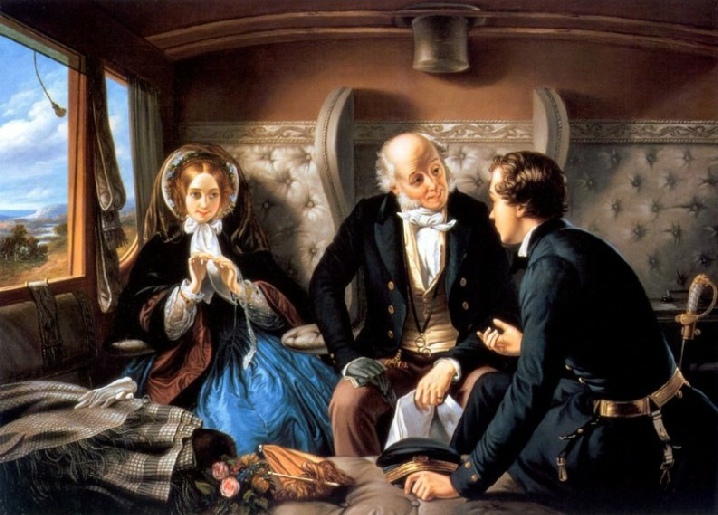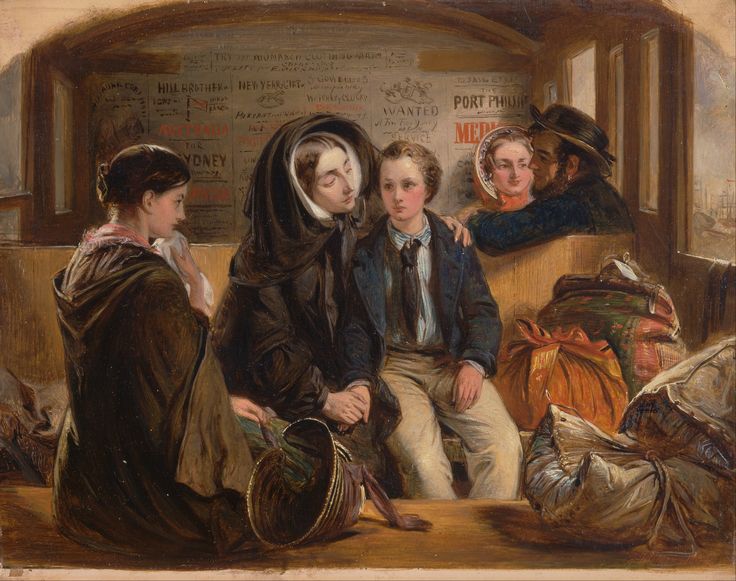
© Railway Wonders of the World 2012-


Early Railway Paintings
The Art of Abraham Solomon

Solomon’s “First Class -
THE Victorian period was an age of astonishing development, with new forms of transport, amazing progress in science, and widespread prosperity. It was natural, therefore, in the days when the camera was still in its infancy, that a picture which recorded the splendid pageant of contemporary life in colour should enjoy popular appreciation, especially when it dealt with railways, a theme of great current interest.
Abraham Solomon’s two railway paintings, Third Class -
In the companion picture, below, the situation was certain to appeal to sentimental mid-

Solomon’s “Third Class -
Solomon himself came from an artistic family, his brother and sister also being painters. Prior to entering the Schools of the Royal Academy at fifteen, he had the privilege of studying under the genial and eccentric Henry Sass. Frith records an incident in which Solomon figured. Sass was taking a party of his pupils to Hampton Court, Frith and Solomon sitting behind Sass and the coachman. Suddenly, Sass turned to Solomon and asked, “Why don’t you wear a Gibus collapsible hat?” Solomon replied that “he didn’t see why he should”. Sass, who was wearing a white Beaver, patently non-
Although he cannot be counted among the greats of nineteenth century painting, Solomon explored with greater artistic success than most of his contemporaries the passing world about him.
Ironically, he was elected Associate of the Royal Academy on the day of his death, December 19, 1862. Thackeray, the author, had recommended his election in 1857 on the exhibition of another of his paintings Waiting for the Verdict, perpetuating at the same time the pun “Here is Solomon in all his glory, but he is not RAyed (arrayed) like some of these”
You can read more on “Railways and Publicity” and “Railways in Art” on this website.